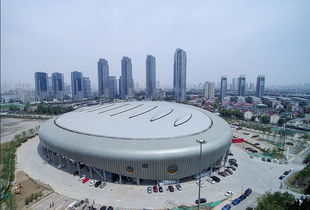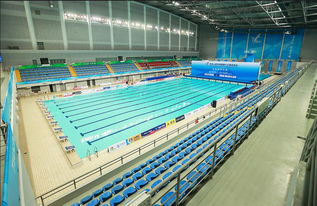Tianjin Olympic Center Swimming and Diving Hall Venue for National Games: Reflecting the “Three Drops of Water” Design

The 13th National Games of the People’s Republic of China opened in Tianjin on August 27, 2017. A total of 417 events in 33 sports were included in the games, which were held in various stadiums, such as Baodi Stadium, Tianjin Stadium and Dongli Stadium. Among them, the Swimming and Diving Hall of Tianjin Olympic Center hosted swimming, diving and synchronized swimming contest.
Professor Chen Zhihua and Associate Professor Liu Hongbo, both from Tianjin University, participated in the analysis of the temperature effects in the construction process and service stage of the Swimming and Diving Hall.
The Swimming and Diving Hall of the Tianjin Olympic Center overlooks the stadium at the other side of the lake. The shape of the hall is like a drop of water, which perfectly reflects the design concept: Three Drops of Water.

The top steel structure of the Swimming and Diving Hall partially adopts spaced steel trusses spanning 64 meters. A total of 12 trusses were installed, each spaced 8 meters apart. The structural system of the hall is formed by a rigid steel frame system, and spaced steel trusses whose outer ring is formed by a steel frame and steel inner ring truss. The steel structure is supported by the lower concrete main structure.
The swimming pool is 50 meters long and 10 lanes wide. The warm-up pool is also 50 meters long, but has 4 lanes less than the swimming pool. The diving venue has a 10m-platform that is equipped with three 3m-springboards and two 1 m-springboards. It has been fitted with 3004 fixed seats and 1020 movable seats for the audience. 63 seats are placed on the rostrum. The light intensity of the venue is 2000 lux. There is a big screen, which can display text and images. The accessories include: locker rooms, lounges, doping test control stations, VIP rooms, press rooms and so on. It has access to the IT network and telecasts.
Editors: Yin Shiyu and Ross Colquhoun

